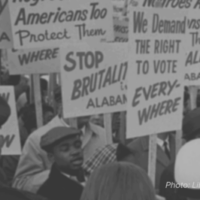When underpaid low-wage workers launched the Fight for $15 in late 2012 here in New York City, few would have predicted that a little more than three years later, they would have changed our country’s economic trajectory and begun to reverse decades of growing wage inequality.
But that’s the import of the landmark agreements they achieved this week in California and New York, raising the state minimum wages to $15 over several years.
The details of the two agreements differ. In California, the minimum wage increases statewide to $15 by 2022, while in New York, there is a tiered structure that gets workers to $15 on different timetables depending on the region.
Combined, the two agreements represent a dramatic political and economic policy shift for the U.S. economy, which has tilted so far towards low-paying jobs that today 42% of America’s workers earn less than $15 per hour. It’s a shift made possible by the underpaid workers of the Fight for $15, who risked their livelihoods for the hope of a better future.
One in three workers, close to 10 million between the two states, will receive raises on the order of $4,000 per year. For a home health aide or a waitress who struggles to get by on $15,000 per year, that’s the difference between near poverty and a life with less stress and more dignity. All told, nearly one in five U.S. workers will soon be covered by $15 minimum wages.
Especially striking, in light of the large scale of these increases, is the significant and growing small business support for a $15 minimum wage. In New York, business groups and individual companies with membership totaling more than 32,000 small businesses across the state endorsed the $15 minimum wage.
Why are they so sanguine? New research from the University of California shows that, unlike small wage increases, a $15 minimum wage generates billions of dollars in new consumer spending, especially in low-income communities, which significantly boosts sales and offsets the higher costs to businesses.
More than 75 economists have endorsed the conclusions of the University of California study, and another 200 economists back a $15 minimum wage nationwide.
The experiences of the first jurisdictions phasing their minimum wages up to $15 have been positive. In Seattle, the first major city to adopt a $15 wage, the Puget Sound Business Journal reported that Seattle’s restaurant industry has continued to grow and thrive as the $15 wage phases in.
Even opponents of higher minimum wages like Popeyes CEO Cheryl Bachelder have said the transition is manageable: “We will adjust to [the] increased costs [of a $15 minimum wage] just like we have before. Life will go on. There’s been too much hubbub about it,” she told CNN.
The California and New York increases cement $15 as the national benchmark for tackling wage inequality, and create momentum for further action. Leaders in the District of Columbia, Massachusetts and New Jersey have announced plans to move $15 minimum wages. And similar legislation has been introduced in Connecticut and other states and cities.
In Congress, support for a $15 minimum wage has been growing steadily. Democrats including Kirsten Gillibrand, Dick Durbin, Chris Van Hollen and 50 other members of the House and Senate are co-sponsoring a $15 federal minimum wage. And Bernie Sanders, the first champion of a $15 minimum wage in Congress, is poised to be a key voice in shaping the Democrats’ agenda around wages and inequality, whether in the White House or in the Senate.
National polling shows strong public support for a $15 minimum wage in all regions of the country — and how underpaid worker backing $15 and union rights are emerging as a potent political force in this year’s elections. As its momentum continues to build, the Fight for $15 is demonstrating with wins like California and New York that a different future for our economy and working families is achievable.
Sonn is general counsel at the National Employment Law Project.
Read the original op-ed at the NY Daily News.



